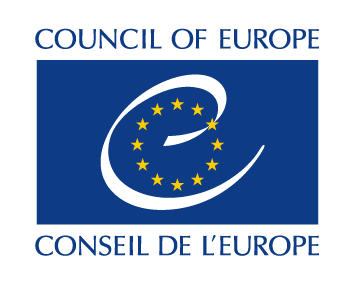Please choose the key concept for which you would like to get some suggestions about supportive material.
Select Key Concept
Select Filters
In any society there are different values and ways of life. Some societies discourage diversity – they make everyone follow the ‘official’ line. Yet freedom to live one’s life as one chooses is a basic aspect of human rights. A society which respects human rights must be a pluralistic one – one which treats all ways of life with equal respect. This can be difficult if different values and lifestyles conflict. In school, young people reflect on the diversity within their own school community. They learn how respect is built through discussion, mutual understanding and willingness to compromise.
Educating for democracy Vol. 1
- Part 1Part 1 - Understanding democracy and human rights Unit 3 – Educating for democracy and human rights Primary, Secondary 1, Secondary 2
Growing up in democracy Vol. 2
- Unit 1: Identity – Me in my community Primary, Secondary 1
- Unit 1Unit 1: Identity – Me in my community Lesson 1: This is what I like Primary, Secondary 1
- Unit 1Unit 1: Identity – Me in my community Lesson 2: My personal symbols (coat of arms part I) Primary, Secondary 1
- Unit 1Unit 1: Identity – Me in my community Lesson 3 – This is our coat of arms (coat of arms part II) Primary, Secondary 1
- Unit 1Unit 1: Identity – Me in my community Lesson 4 – Individuals and groups Primary, Secondary 1
- Unit 2UNIT 2: Diversity and pluralism – At home in Europe Lesson 1: What is Europe? Primary, Secondary 1
- Unit 2UNIT 2: Diversity and pluralism – At home in Europe Lesson 2: I am at home in Europe (building a physical map I) Primary, Secondary 1
- Unit 2UNIT 2: Diversity and pluralism – At home in Europe Lesson 3: I am at home in Europe (building a physical map II) Primary, Secondary 1
- Unit 2UNIT 2: Diversity and pluralism – At home in Europe Lesson 4: Europeans are different and equal Primary, Secondary 1
- Unit 3UNIT 3: Equality – Minorities and majorities Lesson 1: All different, all equal Primary, Secondary 1, Secondary 2
- Unit 3UNIT 3: Equality – Minorities and majorities Lesson 2: Is it fair? (research) Primary
- Unit 3UNIT 3: Equality – Minorities and majorities Lesson 3: Is it fair? (follow-up) Primary, Secondary 1, Secondary 2
- Unit 8UNIT 8: Rights and freedom – My rights – your rights Lesson 3: Survey: what people around us think and know Primary, Secondary 1, Secondary 2
- Unit 8UNIT 8: Rights and freedom – My rights – your rights Lesson 4: Human rights alive! Primary, Secondary 1, Secondary 2
Living in democracy Vol. 3
- Part 1Part 1: Individual and community Unit 1UNIT 1: Stereotypes and prejudices Lesson 3: Stereotypes and prejudices Secondary 1, Secondary 2
- Part 1Part 1: Individual and community Unit 2UNIT 2: Equality - Are you more equal than me? Lesson 1: Differences and similarities Primary, Secondary 1, Secondary 2
- Part 1Part 1: Individual and community Unit 2UNIT 2: Equality - Are you more equal than me? Lesson 2: Vesna’s story Secondary 1, Secondary 2
- Part 1Part 1: Individual and community Unit 2UNIT 2: Equality - Are you more equal than me? Lesson 3: Equality between men and women Secondary 1, Secondary 2
- Part 1Part 1: Individual and community Unit 2UNIT 2: Equality - Are you more equal than me? Lesson 4: Social justice Secondary 1, Secondary 2
- Part 1Part 1: Individual and community UNIT 3: Diversity and pluralism – How can people live together peacefully? Secondary 1, Secondary 2
- Part 1Part 1: Individual and community Unit 3UNIT 3: Diversity and pluralism - How can people live together peacefully? Lesson 1: How can people live together? Secondary 1, Secondary 2
- Part 1Part 1: Individual and community Unit 3UNIT 3: Diversity and pluralism - How can people live together peacefully? Lesson 2: Why do people disagree? Secondary 1, Secondary 2
- Part 1Part 1: Individual and community Unit 3UNIT 3: Diversity and pluralism - How can people live together peacefully? Lesson 3: In what ways are people different? Secondary 1, Secondary 2
Taking part in democracy Vol. 4
- Part 1Part 1: Taking part in the community Unit 1UNIT 1: IDENTITY Lesson 1: Views on choices and identity Secondary 1, Secondary 2
- Part 1Part 1: Taking part in the community UNIT 3: DIVERSITY AND PLURALISM Secondary 2
- Part 1Part 1: Taking part in the community Unit 3UNIT 3: DIVERSITY AND PLURALISM Lesson 1: If I were president … Secondary 2
- Part 1Part 1: Taking part in the community Unit 3UNIT 3: DIVERSITY AND PLURALISM Lesson 2: What goals do we want to promote? Secondary 2
- Part 1Part 1: Taking part in the community Unit 3UNIT 3: DIVERSITY AND PLURALISM Lesson 3: What is the common good? Secondary 1, Secondary 2
- Part 1Part 1: Taking part in the community Unit 3UNIT 3: DIVERSITY AND PLURALISM Lesson 4: Taking part in pluralist democracy Secondary 2
Exploring Children’s Rights Vol. 5
- Part 1Part 1: Lesson plans Unit 1 (Primary school, Class 1) – I have a name – we have a school Primary, Secondary 1
- Part 1Part 1: Lesson plans Unit 6 (Primary school, Class 6) – Children’s rights: a work of art! Secondary 2
Teaching Democracy Vol. 6
- Chapter 1Chapter 1 - Building up classroom atmosphere Exercise 1.1. – Matching cards Primary
- Chapter 1Chapter 1 - Building up classroom atmosphere Exercise 1.3. – Identity coat of arms Primary
- Chapter 1Chapter 1 - Building up classroom atmosphere Exercise 1.4. – A bouquet of flowers Primary
- Chapter 2Chapter 2 - Clarifying values Exercise 2.1. – The raft game Secondary 1, Secondary 2
- Chapter 2Chapter 2 - Clarifying values Exercise 2.3. – Philosophy of life Secondary 2
- Chapter 4Chapter 4 - Perceiving others Exercise 4.1. – All different, all equal Primary, Secondary 1, Secondary 2
- Chapter 4Chapter 4 - Perceiving others Exercise 4.2. – Difference Primary, Secondary 1, Secondary 2
- Chapter 4Chapter 4 - Perceiving others Exercise 4.4. – First impressions Secondary 1
- Chapter 4Chapter 4 - Perceiving others Exercise 4.5. – We all have prejudices Secondary 1, Secondary 2
- Chapter 4Chapter 4 - Perceiving others Exercise 4.7. – The tourists Secondary 1, Secondary 2
- Chapter 4Chapter 4 - Perceiving others Exercise 4.8. – Globingo: “A human being is part of the whole world”. Primary, Secondary 1, Secondary 2
- Chapter 7Chapter 7 - Taking part in politics Exercise 7.3. – Questionnaire on attitudes to change Primary, Secondary 1, Secondary 2

